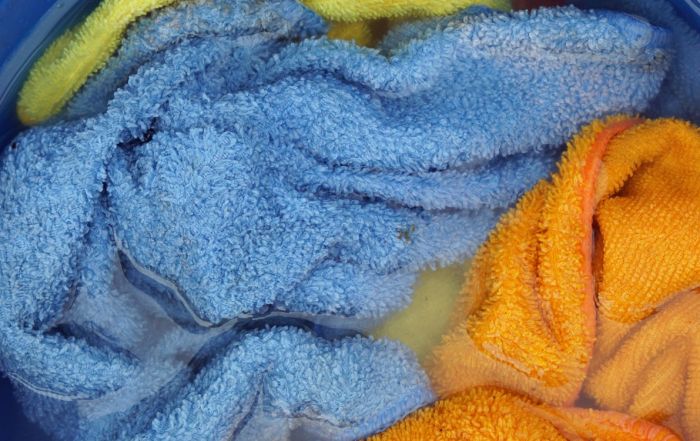Handwashing 101
During the last several months, we have all heard about the importance of hand hygiene. Food service folks have long known that our mothers were right – washing your hands with soap is an excellent preventative step in avoiding illness. Now with COVID, there is more messaging that ever before about handwashing and avoiding cross contamination from unclean surfaces. Those with a tendency for germaphobia (yours truly, by the way) may have noticed this deepening to close to obsessive levels! In fact, carrying one’s own tool kit of disinfecting wipes and hand sanitizer is now the cool thing to do. No surprise that shortages of these supplies at the retail level, along with toilet paper, are voiced loud and clear via social media.
In looking for something positive from the pandemic (we are both glass half full types!), increased awareness about hand hygiene and cross contamination are beneficial outcomes. The how and when of correct handwashing is almost a mantra for those in foodservice. The recipe is to use clean water, later with soap for 10 to 15 seconds, rinse with water, and then dry with either a disposable towel or hot air dryer. While air dryers are environmentally preferred, having a disposable towel handy to turn off faucets, if not automated, and/or open the restroom door to exit and keep clean hands clean is advantageous. Plus, research has shown the abrasion of the towel further reduces microbial load on the hands.[1]
When to wash hands is clearly specified in the FDA Food Code. Per Code, hands should be washed: when entering the kitchen, before beginning food preparation or eating, after touching any soiled item or unclean surfaces, handling raw protein foods, using the restroom, taking out garbage, and working with chemicals. Putting this into practice is a challenge. For instance, a staff member exits the kitchen to use the restroom so hands should be washed in the restroom as well as immediately after reentering the kitchen. Most surfaces in the kitchen area are kept clean and sanitized, but there are the hidden touch points, such as refrigerator door handles, that may not be included in daily cleaning schedules and should necessitate a handwashing after touching. Other surfaces get touched so frequently, it is a challenge to keep them free of any harmful microorganisms. Our former colleague, Dr. Jeannie Sneed, led a couple of research projects documenting microbial loads on different kitchen surfaces, with findings published in several peer-reviewed journals and used in creating the YUCK photos housed on the Iowa State University Food Safety Project web page (available as a free download). Refrigerator handles were found to harbor lots of pathogenic microorganisms in various kitchens!
Another challenge is that jobs may require frequent changes from handling “clean” surfaces (i.e. serving a plated meal) to those that are “dirty”, such as removing soiled dishware from the table and taking to the dish room. This can be especially true for front-of-house staff in full service restaurants. At K-State, Kevin’s group has developed messaging about handwashing that can help reinforce the importance of handwashing. Moreover, FoodHandler has some great videos (each about 5 minutes in length, so perfect for training) about handwashing and other hand hygiene practices.
In the second blog this month, we will discuss some strategies to minimize the need for handwashing occasions, while still maintaining good hand hygiene. Join us for the SafeBites webinar on September 16th for a deeper look about hand hygiene.
Hand hygiene is one way to control from risks of illness. As we say at FoodHandler – Risk Nothing!
[1] Strohbehn, C.H., Sneed, J. Paez, P., & Meyer, J. (2008). Handwashing frequencies and procedures used in retail food services. Journal of Food Protection, 71(8), 1641-1650.
READ MORE POSTS
Embracing Technology for Enhanced Food Safety in Foodservice Operations
Technology. We love it, we hate it. I’ve always been fascinated by technology; I remember getting my first Blackberry in the mid-90s and thinking it was the pinnacle of technological advances. Before that, I remember ordering a dictation program in college that was going to revolutionize the way I “typed” my assignments. Looking back, it really wasn’t worth the box that the program came in. Now, we have ChatGPT that will write the entire paper for us!
Meat Color and Doneness: Persistent Pinking
Late in June, my family and I were able to visit the Black Hills, an area of the country in which I have not had the opportunity to spend much time. One evening, as we dined at a local restaurant, I observed a table across the dining room sending back a dinner. While I couldn’t hear the entire conversation and I certainly wasn’t trying to eavesdrop, it was apparent that the customer was unhappy with the cooking of their hamburger and was sending it back because it was too pink in the middle. That immediately brought to my mind the phenomenon known as persistent pinking. A term I became familiar with because of work done by some colleagues here at Kansas State, which they present each summer to a group of foodservice operators who join us on-campus for an in-depth week-long look at all things food safety.
Quat Binding – Why this Can Have a Disastrous Impact on Your Sanitation Program.
In June, I had the opportunity to represent FoodHandler and speak on food safety behavior for customers of Martin Bros. Distributing in Waterloo, Iowa. One of the questions that was asked caught me a little off guard. The question was about quat binding. It caught me off guard not because it was a bad question, but only because it was not something I had previously been asked nor had not yet been exposed to the phenomenon. However, I soon learned that in certain jurisdictions, it is resulting in changes to how sanitizing cloths are to be stored in sanitizing buckets (or not) in the foodservice industry. When I returned home from the trip, I had to dig into it to learn about what quat binding is and how it might impact foodservice operations.
Are Grades for Foodservice Inspections a Good Idea?
I generally try to stay away from controversial topics in my blog, but this is one I thought it might be interesting to discuss. Occasionally on my travels, I will come across a state or a local jurisdiction that requires foodservice inspection scores be posted in the window of the establishment. The idea is to allow would-be customers the ability to see how the foodservice operation in which they are about to eat scored on their latest health inspection.










